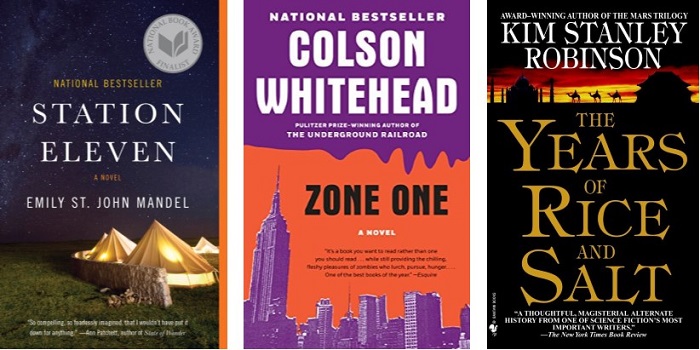Playing the board game Pandemic recently, it was oddly comforting to have a role in eradicating the virus and fighting the good fight with our team of scientists, researchers and first responders.
Thinking about the experience, I realized I’ve been feeling the impulse to read some pandemic fiction, even though that subject matter isn’t my usual go-to for a pleasurable experience. And hasn’t my newsfeed given me enough to read about pandemics, viruses and exponential spread?
Apparently not, and I am not alone in this desire to spend time immersed in a fictional pandemic. Since the rise of the novel coronavirus, the movie Contagion—worldwide virus, scramble to develop a vaccine—has spent weeks on the top 10 iTunes rental chart.
There is a plethora of fiction to choose from covering the gamut of pandemics, plagues and other flavors of apocalypse. Probably the earliest example of apocalyptic fiction is Frankenstein author Mary Shelley’s The Last Man, published in 1826.
Set in the late 21st century, The Last Man introduces us to Lionel Vernay, the lawless son of an impoverished nobleman, on his journey to becoming the last man alive after a plague wipes out the human population.
If this sounds a little grim, my personal favorite in this genre is Emily St. John Mandel’s Station Eleven, which follows a band of traveling musicians and actors in the aftermath of a flu that wipes out a good percentage of the population virtually overnight. This is ultimately an uplifting story, as Mandel has an abiding faith that art, culture and our shared humanity will prevail in the face of large-scale disaster.
If you fancy a little zombie with your pandemic story, Zone One by Pulitzer-nominated novelist Colson Whitehead (pictured above) delivers. Set in New York City after a virus turns the infected into mortally contagious and flesh-hungry zombies, Whitehead explores post-apocalypse survival as a team of “sweepers” patrols the city to make it inhabitable again.
What better time than now to delve into an epic alternate history novel that spans centuries? Science fiction author Kim Stanley Robinson’s The Years of Rice and Salt proposes that something as simple as fewer cats and more rats in Europe during the Black Plague would have meant the loss of 99 percent of the European population instead of “only” one-third. How would that have changed history?
Find these stories at the Washington Anytime Library; look for the featured booklist and use your library card (or apply for a card online if you don’t already have one) to check out and read from home. Alternately, visit your library’s online catalog to place holds on physical materials that will be fulfilled once libraries reopen. Or support your local independent bookseller, Village Books; they offer a mail service—99 cents no matter the weight of the order.
Faced with sudden-onset change and the feelings of vulnerability that accompany it, tales such as these can actually be helpful for exploring ways we might behave in the face of such change, and provide a comfort that the story actually does end—with a cure, vaccine or containment—and the assurance that life does go on.
Lisa Gresham is the Collection Services Manager at the Whatcom County Library System. If you are running out of reading material, visit your library online at https://www.wcls.org
(Originally published in Cascadia Weekly, Wednesday, April 8, 2020.)

